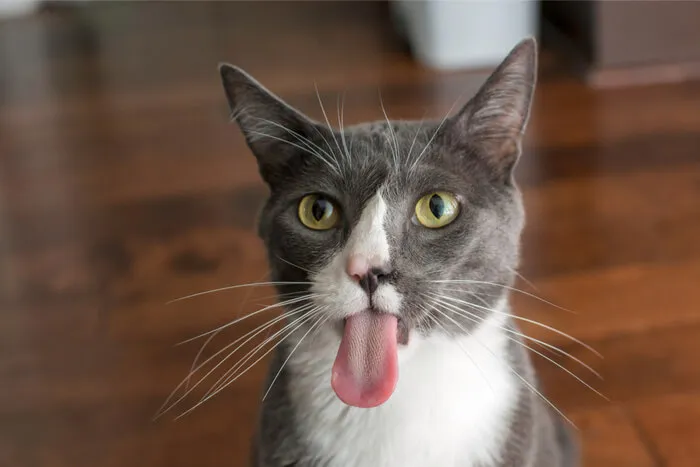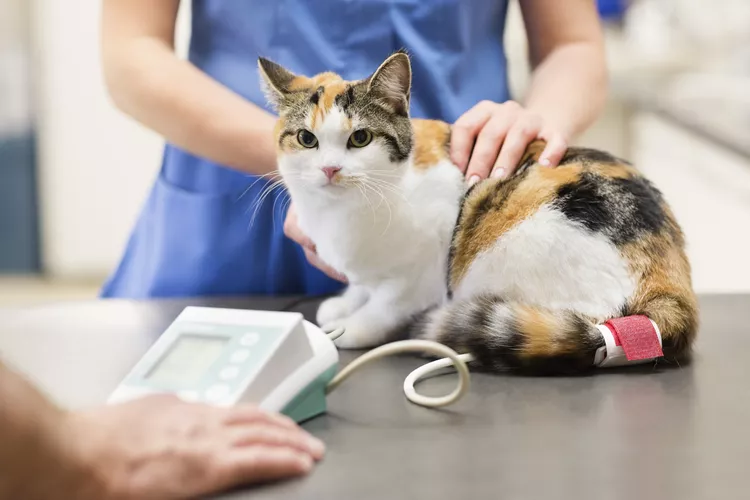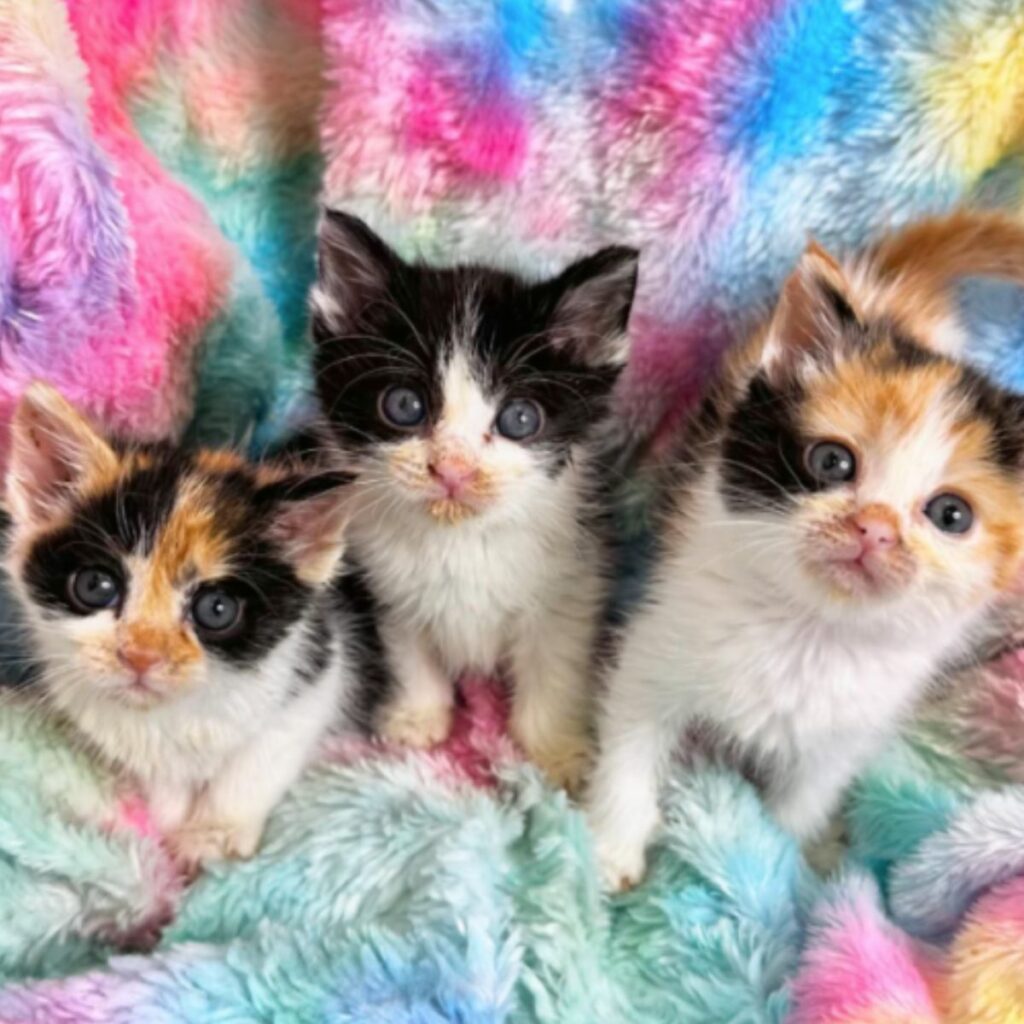The feline tongue is a specialized organ, unlike any other tongue in the animal kingdom. Read on to learn 10 fascinating facts about cat tongues.
1. A Cat’s Tongue Is Covered In Spines
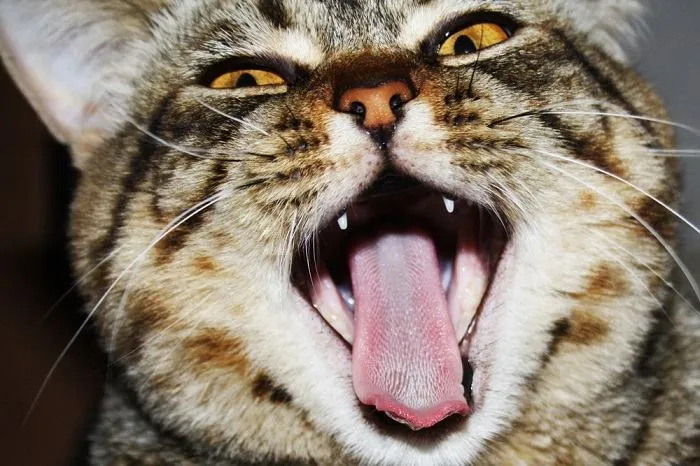
The sharp spines enable the distribution of saliva through the entire hair coat down to the cat’s skin, cleansing the coat and helping bring down the cat’s body temperature on warm days.
If you’ve ever wondered why your cat’s tongue feels rough like sandpaper, it’s because the surface is covered with hundreds of tiny backward-facing spines, called papillae.
A study by researchers Alexis Noel and David Hu at the Georgia Institute of Technology published in the Proceedings of the National Academy of Sciences in Atlanta examined cats’ tongues via CT scans, high-speed videos and thermal imaging.
The study found that the small, sharp spines are shaped like scoops and are hollow at the tips. These hollow cavities absorb saliva, which is later distributed on the hair coat when the cat grooms itself.
The sharp spines enable the distribution of saliva through the entire hair coat down to the cat’s skin, cleansing the coat and helping bring down the cat’s body temperature on warm days. Cat papillae also untangle the coat like a natural hairbrush, and aid in the removal of loose shedding hairs from the coat.
2. Wild Cats Have The Same Type Of Tongue
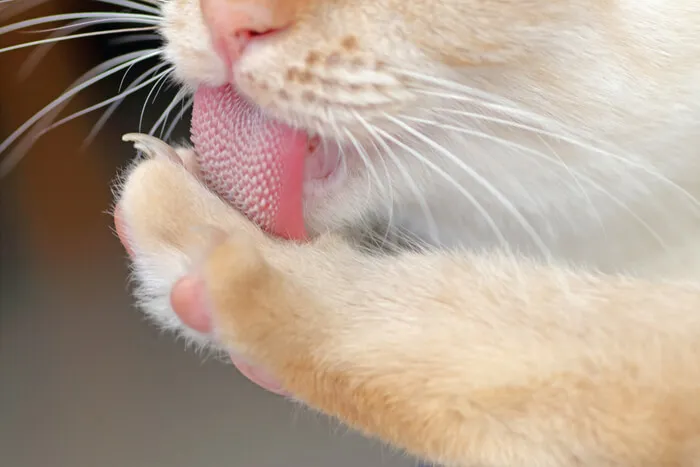
Cat tongue up close, a cat’s tongue is a natural hairbrush, smoothing the coat and removing loose hairs.
The sandpaper tongue is shared by all species of cats, both wild big cats and domesticated house cats, within the Felidae family of mammals in the order Carnivora. If you were to be licked by a lion, tiger, snow leopard, cougar or bobcat, it would feel much the same as the scratchy kisses from your domestic cat—albeit a bit more intense!
Also Read: How Much Do Cat Vaccinations Cost? Updated Cat & Kitten Vaccine Pricing for 2024
Wild cats groom themselves the same way domesticated cats do, using their tongues to distribute saliva on to the hair coat. The spiny papillae on the tongue assist with this self-grooming, but they serve another purpose—they help big cats hook and scrape meat from their prey meals.
3. A Cat’s Tongue May Be Responsible For Hairballs
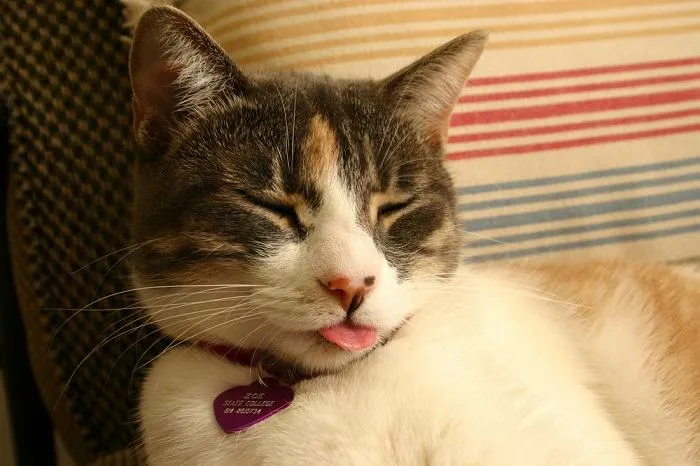
Cat owners should brush their cats frequently to remove as much loose hair as possible and help cut down on hairballs.
Cats spend much of their waking time grooming themselves. The stiff papillae of the tongue are great at untangling cat fur and removing loose hair from the coat.
Ideally, the cat does not swallow too much hair, but because the tongue’s spines face backward, anything in the mouth is directed toward the back of the mouth. Swallowing too much hair can cause hairballs if the cat doesn’t cough up a hairball and the hair isn’t able to pass through the digestive tract.
Also Read: How To Help Your Cat Feel Better After Vaccinations
Cat owners should brush their cats frequently to remove as much loose hair as possible and help cut down on hairballs. This is especially important for cats with very long hair like Persian cats. You can also give hairball remedies or hairball food, which have ingredients designed to help move hair through the digestive tract and out the body.
4. The Spines Of A Cat’s Tongue Are Made Of Keratin
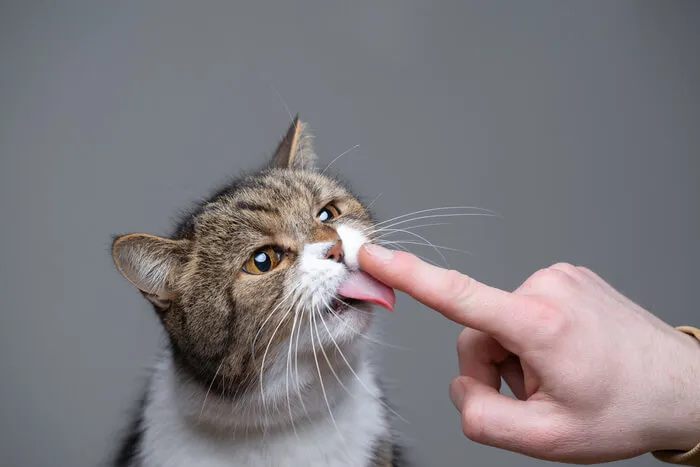
Tiny backward-facing spines made of keratin make a cat’s tongue feels like sandpaper.
Cat papillae are made of a strong, fibrous material called keratin. Your cat’s claws and fur are also made from karatin. Human fingernails and hair are made from karatin, too.
5. A Cat’s Tongue Is One Reason String And Tinsel Are So Dangerous
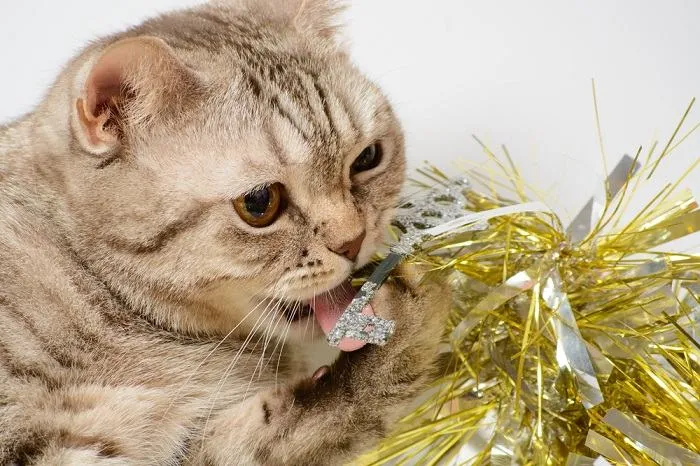
Always keep strings, yarn, ribbons and tinsel away from your cat, and if you see a piece sticking out of your cat’s mouth, never pull on it—you could inadvertently cause serious damage.
The backward-facing papillae can do more harm than contributing to hairballs. If a cat begins to swallow a long piece of string, yarn, ribbon, thread, tinsel or similar, the hooked barbs make it hard for the cat to spit it out.
One end of a string can become stuck to the tongue while the rest of the string continues down the digestive tract. This is extremely dangerous as the string can rub and eventually saw its way through delicate tissues inside your cat.
Always keep strings, yarn, ribbons and tinsel away from your cat, and if you see a piece sticking out of your cat’s mouth, never pull on it—you could inadvertently cause serious damage. Instead, rush your cat to a veterinarian for treatment.
6. A Cat Can Move The Papillae On Its Tongue
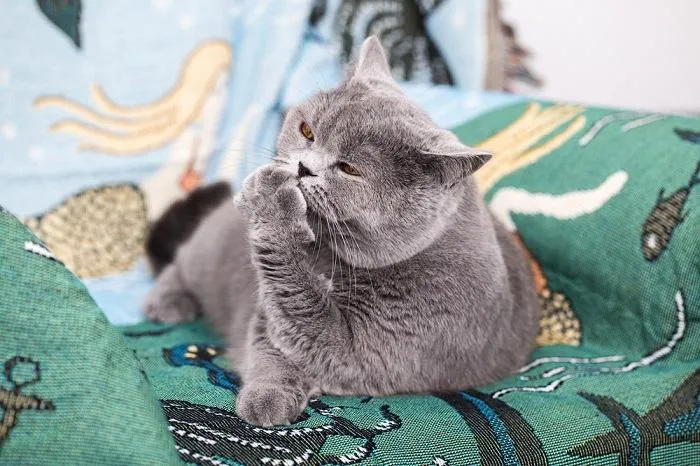
When a cat is not using its tongue for grooming, eating or drinking, the bristles on the tongue lie flat facing the back of the mouth. When the cat is ready to groom itself, it opens its mouth, extends the tongue and the papillae stand up off the tongue, ready to get to work.
7. Cat Uses Their Tongues To Drink Water—But Not How You Might Think
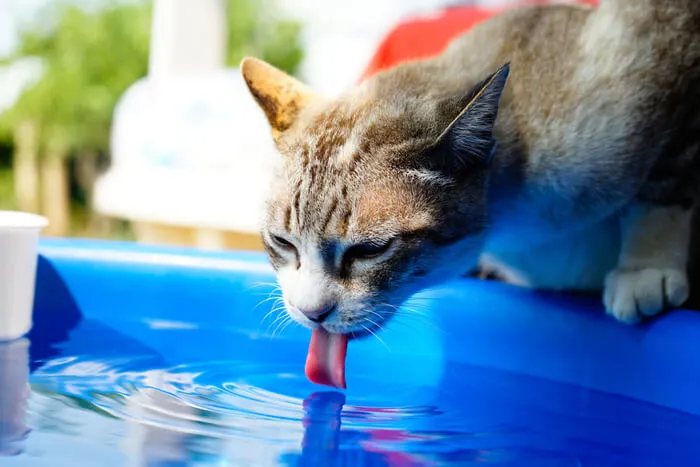
Cats use their tongues to drop water up toward their mouth in a column.
Humans sip water with their lips and dogs use their tongues to lap up water, like using a ladle. When a cat drinks water, though, it uses its tongue in a very unique way.
Rather than lapping up water like a dog, a cat uses its tongue like a backward scoop to quickly draw water straight up toward its mouth. The action of the tongue is so fast that water is pulled up in a stream or column.
The cat closes its mouth around the column of water to take a drink. The next time your cat takes a drink of water from her bowl, try to sneak a peek so you can witness this unusual phenomenon in action.
8. A Cat’s Tongue Can Provide Clues About Its Health
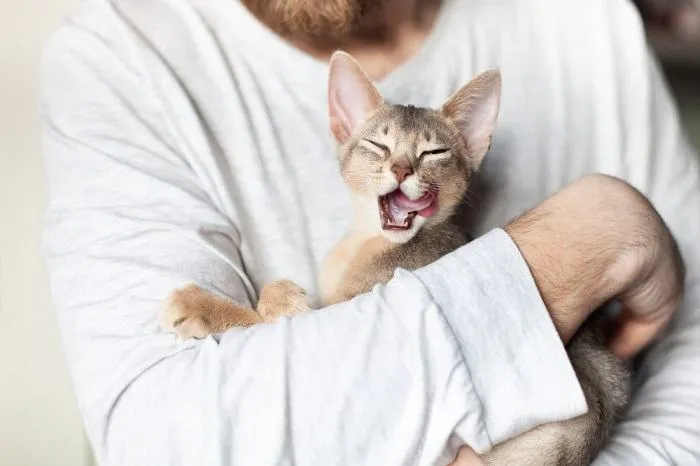
If you ever notice that your cat’s tongue or gums look anything but bright pink, contact your veterinarian immediately.
A healthy cat’s tongue and gums should be bright pink. If your cat’s tongue looks white, blue, purple, gray, yellow or dark red, or if you see spots on your cat’s tongue that weren’t there before, it could indicate a health issue. If you ever notice that your cat’s tongue or gums look anything but bright pink, contact your veterinarian immediately.
9. Mother Cats Use Their Tongues To Help Their Kittens Go To The Bathroom
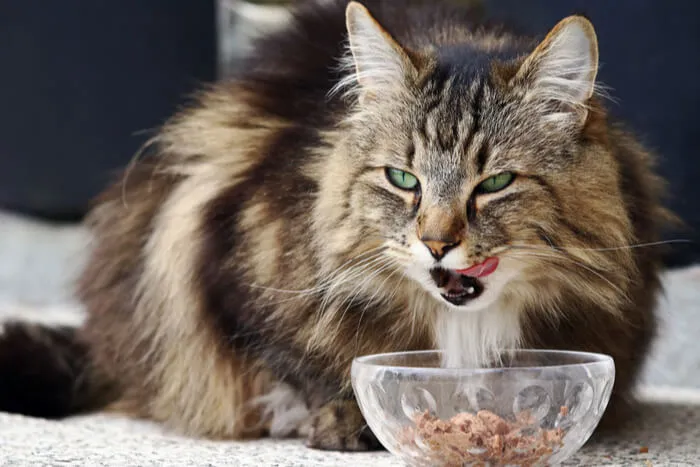
Cats taste differently than humans or dogs.
Newborn kittens can’t urinate or defecate on their own. In order to poop and pee, the kittens rely on help from their mother. Several times a day, the mother cat licks each kitten’s genital area with her rough tongue.
This action stimulates the kitten to spontaneously urinate and defecate. When a litter of young kittens is orphaned, it’s vital that the human caregiver stimulate them to pee and poop by wiping their genital areas with a warm, damp washcloth, which simulates the mother’s tongue.
10. Cats Can’t Taste Sweet, But They Can Taste One Thing Humans Can’t

A cat’s tongue contains several hundred taste buds, which enable the cat to pick up different tastes.
A cat’s tongue contains several hundred taste buds, which enable the cat to pick up different tastes. Cats can detect five different tastes: salty, sour, bitter, umami (savory or meaty) and adensine triphosphate (ATP).
Humans can’t taste ATP, which is a compound found in meat. One thing dogs and humans can taste but cats cannot is sweet flavors. This is because cats do not have the taste receptor required to detect sweet (the TAS1R2 gene). Some researchers hypothesize that cats have no biological need to taste sweet foods since their diet is primarily meat based.
